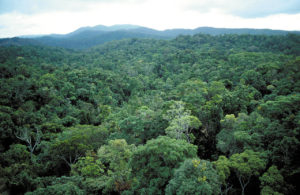Fishing Cause of Shark Numbers Plummeting
Sharks being killed for there meat and fins has resulted in them becoming much rarer in areas near to large human populations and fish markets. The body size of them and other marine predators has also fallen dramatically in these areas.
 Image: Dr. Dwayne Meadows, NOAA/NMFS/OPR (http://www.photolib.noaa.gov/htmls/reef0693.htm) [Public domain], via Wikimedia Commons
Image: Dr. Dwayne Meadows, NOAA/NMFS/OPR (http://www.photolib.noaa.gov/htmls/reef0693.htm) [Public domain], via Wikimedia Commons A team of researchers, led the Zoological Society of London (ZSL), has discovered that sharks are much rarer in habitats nearer large human populations and fish markets. The team also found that the average body size of sharks and other marine predators fell dramatically in these areas, where sharks are caught and killed intensively for their meat and fins.
The study, published in the journal PLOS Biology, shows that the average body size and number of sharks and other marine predators, which are vital to maintaining healthy ocean ecosystems, fell significantly in proximity to cities with more than 10,000 people and associated fishing fleets.
The minimum distance from people and fishing which had no measurable effect was 1,250 kilometres. This is far further than previous studies have suggested and probably reflects the increased distances fishing boats can now travel. As a result, sharks were only observed at 12% of sites monitored.
Interestingly, researchers also found that sea surface temperature had a strong influence on predators’ average body size, with a marked decrease at more than 28°C. While this is consistent with normal biogeographic patterns (it is known that many smaller species live in tropical waters, for example) it could become a problem as global temperatures continue to rise.
Lead author Dr Tom Letessier, from ZSL’s Institute of Zoology, said: “Human activity is now the biggest influence on sharks’ distribution, overtaking every other ecological factor. Just 13% of the world’s oceans can be considered ‘wilderness’ but sharks and other predators are much more common and significantly larger at distances greater than 1,250 kilometres from people. This suggests that large marine predators are generally unable to thrive near to people and is another clear example of the impact of human overexploitation on our seas.”
To collect their data, the team analysed video footage taken at 1,041 sites across the Indian and Pacific Oceans, selected to test the biggest possible range of conditions and habitats. Sites varied in proximity to fish markets and human populations, with some close to cities and others up to 1,500 kilometres away. Sharks, and other free-swimming predators were studied using cameras attached to cannisters filled with bait. In total the team recorded 23,200 animals representing 109 species. These included 841 individual sharks from 19 different species.
Dr Letessier added: “Our study also found that shallower water habitats, of depths less than 500 metres, were vital for marine predator diversity. We therefore need to identify sites that are both shallow and remote and prioritise them for conservation. However, there are still numerous shallow hotspots in the vicinity of human markets that are not appropriately protected, and this must change. Existing large, no-take MPAs need to be better enforced and extended to focus on the last refuges where these extraordinary animals remain abundant. Large marine predators – and sharks in particular – play a unique and irreplaceable role in the ocean ecosystem. They control populations of prey species, keep those populations healthy by removing sick or injured animals, and transport nutrients between loosely connected habitats over vast distances.”





No comments yet.